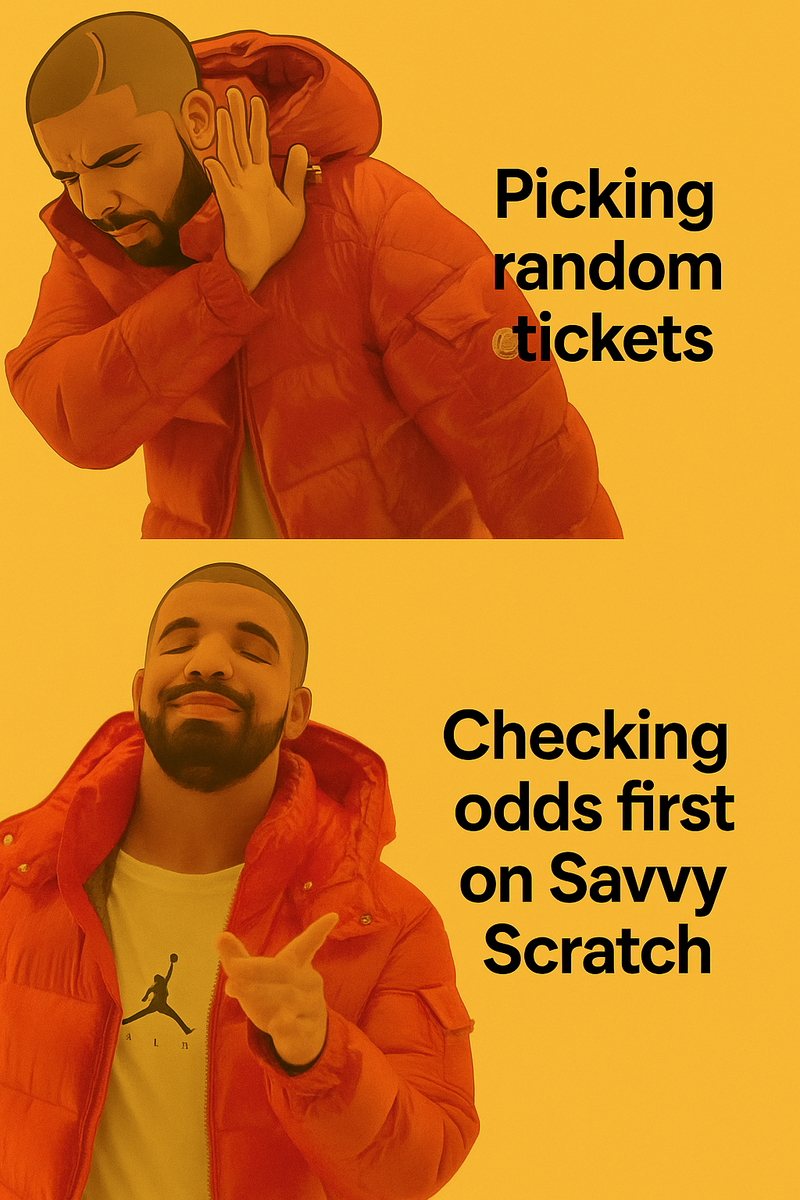
Lottery Data: How to Use Numbers to Spot Winning Tickets
7/7/2025
Lottery Data: How to Use Numbers to Spot Winning Tickets
Want to scratch smarter? It starts with data.
Not hunches. Not lucky coins. Not tips from the guy at the gas station.
✅ Real scratch-off strategy is about reading lottery data — and using it to identify games that offer a better chance of winning something meaningful.
In this guide, we’ll cover:
- 🎯 What kind of lottery data actually matters
- 📊 Where to find it
- 🧠 How to analyze it manually (with examples)
- 🛠️ How our app simplifies all of this
- 🧘♂️ How to keep it fun and responsible
Let’s dig into the numbers — and help you stop wasting money on tickets that no longer make sense to play.
🎯 What Lottery Data Actually Matters
There’s a lot of info floating around about lotteries, but most of it is noise. When it comes to scratch-off tickets, these are the key data points you want to track:
1. Total number of tickets printed
This is the total population of the game — the base for all odds calculations.
2. Number of top prizes at launch
How many jackpot or big-dollar prizes were available when the game began?
3. Remaining top prizes today
How many of those big wins are still unclaimed?
4. Remaining mid-tier prizes
Are there still plenty of $100 to $1,000 wins left, or just $5 freebies?
5. Game age or release date
How long has the game been out? Most jackpots are won early. A game with no wins reported after months might be ripe.
📊 Where to Find Lottery Data
Most U.S. state lotteries publish game data. It’s just usually buried in clunky spreadsheets or PDF tables.
Common places:
- State lottery websites (scratch-off or "Games" section)
- "Prizes Remaining" pages
- Game brochures (PDFs)
- Archive pages for older or ending games
🧠 Some states even post the total number of printed tickets in the game rules or on the ticket itself.
🧠 How to Analyze It (By Hand)
Let’s walk through a simplified example:
Imagine a $10 ticket game:
- 8 million tickets printed
- 4 jackpots of $500,000
- 3 jackpots already claimed
- Estimated 6 million tickets sold
That means:
- Only 2 million tickets remain
- 1 jackpot still available
👉 Current jackpot odds = 1 / 2 million
That’s double the odds compared to launch (which was 1 in 2 million).
That’s a smart play — and most players wouldn’t even realize it.
Example: Avoiding a Bad Game
Now let’s say a $20 ticket has:
- 5 jackpots originally
- 5 claimed
- Still available in stores
🛑 That ticket is now a trap. The top prizes are gone.
You might still win small amounts, but the dream is over — and they’re legally still allowed to sell it.
📉 The Problem: Data Isn’t Always Easy to Use
Even if you understand how to use the data, most players face two big problems:
It takes time.
Prize reports are updated frequently. You’d have to check them every few days.
Some states don’t make things clear.
Not all states publish total ticket counts. Sometimes you’re estimating sales based on mid-tier prize claims.
Unless you really enjoy spreadsheets, this can get old fast.
🚀 How Our App Uses Lottery Data for You
Savvy Scratch was built by gamblers who got tired of guessing. We track:
- ✅ Total tickets printed (where available)
- ✅ Daily updates of remaining prizes
- ✅ Ratio of big prizes vs. estimated unsold tickets
- ✅ Whether the jackpot odds have improved
- ✅ Games that should be avoided entirely
We do the math so you don’t have to.
Instead of checking 50+ games by hand, we highlight all the tickets worth buying today based on current data.
💡 Advanced Insight: Jackpot Density
Beyond simple odds, you can also look at jackpot density:
How many tickets are still out there per jackpot still unclaimed?
Example:
- Ticket A: 4 jackpots, 6 million tickets → 1 in 1.5M
- Ticket B: 2 jackpots, 1 million tickets → 1 in 500K
Even though Ticket A has more jackpots, Ticket B gives you a significantly better shot per ticket — and is likely the better choice.
This kind of analysis is exactly what Savvy Scratch automates.
🛑 Responsible Play Reminder
Data helps — but it doesn’t guarantee anything.
Even the “best” ticket can be a loser. The goal isn’t to win every time. It’s to:
- Avoid truly bad games
- Make smarter choices
- Stretch your budget
- Get more entertainment per dollar
🎯 Let data guide you — not emotion.